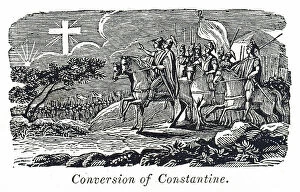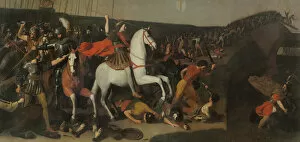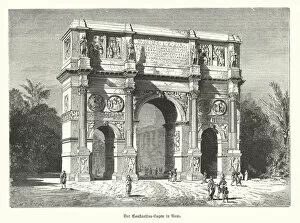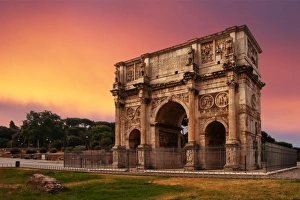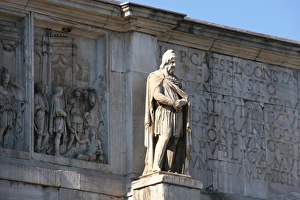Battle Of Milvian Bridge Collection
"The Battle of Milvian Bridge: Constantine's Divine Victory and the Triumph of Rome" In this captivating oil on canvas artwork
All Professionally Made to Order for Quick Shipping
"The Battle of Milvian Bridge: Constantine's Divine Victory and the Triumph of Rome" In this captivating oil on canvas artwork, we witness the historic Battle of Milvian Bridge, a turning point in Roman history. The painting depicts the victorious moment when Emperor Constantine emerged triumphant over his rival Maxentius. As we gaze upon the engraving of the Arch of Constantine in Rome, we are reminded of the grandeur and significance of this battle. It serves as a testament to Constantine's military prowess and his subsequent rise to power. The chromolitho prints further emphasize the divine intervention that played a crucial role in this battle. One portrays an apparition of a cross announcing victory to Constantine before the battle, while another showcases his vision prior to engaging in combat at Saxa Rubra. These mystical experiences solidified his faith and belief in Christianity. The conversion engraving captures an important moment when Emperor Constantine embraced Christianity after witnessing these miraculous signs. This pivotal event not only transformed him personally but also had profound implications for Rome's future as it marked the beginning of its transition into becoming a Christian empire. In another stunning artwork from 1544, angels carrying swords fly above as Constantine defeats Maxentius, symbolizing divine assistance during this decisive encounter. Centuries later, an unknown artist immortalized these events through their depiction titled "The Triumph of Rome. " This masterpiece celebrates not only Constantine's victory but also pays homage to Rome itself - showcasing its resilience and ability to adapt amidst changing times. Lastly, we have "The Donation of Constantine, " an anonymous piece illustrating how he bestowed vast territories upon Pope Sylvester I. This act further solidified Church-State relations and established Constantinople as one of Christendom's most influential cities. Through these various artworks spanning centuries, we glimpse into one fateful day that forever altered history.

